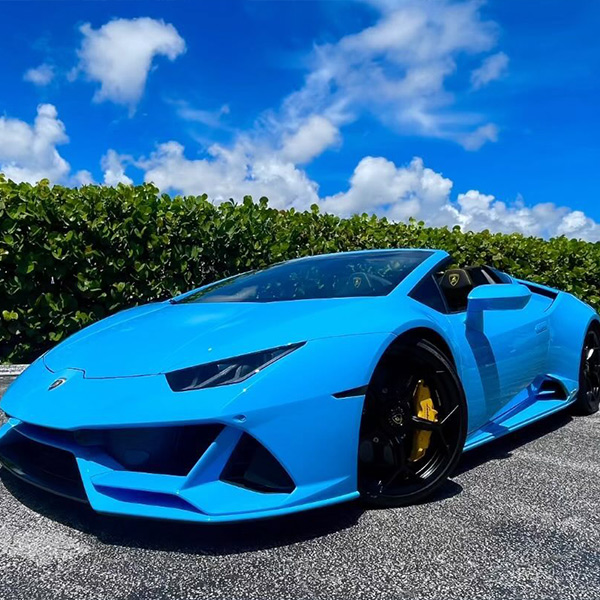
Protection from Harmful UV Rays
Protection from Harmful UV Rays
UV rays are one of the biggest culprits when it comes to paint and color degradation. If you live in a warm climate, there’s no way of getting away from the power of the sun. Sure, you can park your ride in a garage, beneath a carport, or beneath the shade of a tree (and put up with the issue of resin, sap, and bird droppings). However, if you want to use your car—which is the whole reason for having it—then it’s going to spend a lot of its life exposed to the elements.
So what’s the answer?
Paint protection, that’s what…
The Reason to Protect a Car from UV Rays
- Why UV rays damage car paintwork
Why UV rays damage car paintwork
The sun. It bathes our planet with life-giving light, allows us to enjoy its warmth, means plants grow and thrive, and… wreaks untold havoc on your car’s paintwork. It also does the same to our skin, but we combat that with sun cream.
Warning! Nerdy science bit coming up…
UV rays are invisible to the naked eye. They emit a band within an electromagnetic spectrum that ranges through all the colors of the rainbow. In basic terms, UV rays are bursts of energy that create heat and can break down molecular bonds of all things on the Earth.
Now, this breakdown doesn’t happen in an instant. It occurs over time. So when a car is subjected to weeks, months, and years of sun exposure, the molecules that make up the paint and the top clear coat begin to degrade. The result that we can see is color fade and, in extreme circumstances, flaking and breakdown of the topcoat.
This also occurs on every other part of the car, including plastic trims, tires, and the car’s interior. The color that’s most susceptible to UV damage and paint fade is red, followed by purple and orange.
To prevent this from happening, we can add a paint protection product to the exterior of the vehicle that creates a barrier against the harmful UV rays.
Protect a Car from UV Rays: the choices
- Choice 1: waxing
- Choice 2: paint protection film
- Choice 3: ceramic coating
Choice 1: waxing
This is the cheapest, least effective, and most labor-intensive option. It will need to be redone every few weeks and takes a good few hours to apply correctly.
Choice 2: paint protection film
Paint protection film (PPF) offers great protection against UV rays. It involves the application of an invisible layer of plastic that prevents the rays from reaching the paintwork. In addition, it’s also a defense against other environmental damage, such as chemical stains, minor scratches, water spotting, and more.
Good quality PPF is hydrophobic, self-healing, and considered an upgrade to any vehicle. It helps keep the factory paintwork in pristine condition and, therefore, will increase the resale value of a vehicle. Correctly installed PPF lasts for many years. It’s best applied to new or nearly new vehicles, or those that have recently been resprayed.
Choice 3: ceramic coating
This is perhaps the ultimate choice. Ceramic coating is the application of an invisible, super-hard layer over the top of either factory paintwork or a car wrap. Once in place, it lasts for many years and provides incredible protection from UV paint fade. It also prevents other environmental damage to the exterior.
In addition, it has incredible hydrophobic properties and makes the paintwork shine in a way that needs to be seen to be believed. In terms of paintwork protection, ceramic coating is right at the top of the tree. For anyone who wants to ensure the longevity of their car’s good looks, there’s simply no other choice.
PPF and Ceramic Coating Doesn’t Come Any Better than Installation from Auto SuperShield
At Auto SuperShield, we know a thing or two about paint protection. We’ve been in the business for many years and our talented technicians are passionate about making Florida’s cars look fantastic!
Ceramic coating is the ultimate way to protect your precious ride’s exterior from the harsh Florida sun. Or if you’d prefer PPF, we’ll advise on the best type for your needs.
Head over to https://www.autosupershield.com/ceramic-coating for more information and give our expert team a call for a no-obligation chat.
Related Posts
How can we help you?
We have an incredibly quick turn around time and have staff ready to take your call!
Email us at your convenience.
We'd love to see your vehicle!
We have staff awaiting your call!







